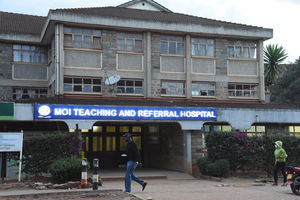County, State sign deal to build low-cost houses

An aerial view of Kisumu Town. PHOTO| TONNY OMONDI
What you need to know:
- The report, which highlights the most affordable location for a household to purchase a home given one’s income level, says the residential sector in Kisumu is developing, with most of the mega developments being less than five years old.
- This growth is driven by government decentralisation, urbanisation and growth of the middle class.
- In Kisumu, residential houses are distributed in the outskirts of CBD.
County governments are struggling to align their development goals with President Uhuru Kenyatta’s Big Four agenda. The four key pillars include manufacturing, universal healthcare, affordable housing, and food security.
Kisumu and Homa Bay counties are examples of devolved units seeking to work towards the realisation of these pillars, especially affordable housing.
Homa Bay County government for instance has signed a memorandum of understanding with the national government to construct 2,000 affordable houses in the devolved unit.
Governor Cyprian Awiti and Housing Principal Secretary Charles Mwaura signed the deal a fortnight ago. Speaking after signing the agreement, Mr Mwaura said construction of the houses will begin in the next six months.
He said the project seeks to enable low income earners to occupy and own high quality houses.
“Construction of these houses will begin after 180 days from today. I am telling Homa Bay residents to ask me if they fail to see any work going after the duration because this is a serious deal,” said Mr Mwaura.
Homa Bay will be the first county where the programme will be undertaken.
“We have realised that Homa Bay has readily available resources for constructing the houses, hence we will not disappoint residents,” said Mr Mwaura.
Mr Awiti said the project is also aimed at creating 10,000 job opportunities for residents.
“Construction of the houses is our endeavour to eradicate poverty because each house will create five job opportunities for the locals,” he said.
CITY’S EXPANSION
“Living in a good house is a basic right of our people and this programme will help us achieve this,” he added.
And as Kisumu city moves towards a 24-hour economy, land-user change is phasing out the former town plan, which designated areas close to the busy central business district as peri-urban hinterland.
Investors have moved in to reap from the move to the town’s outskirts. Among them is Kisumu Real Estates (KRE), which entered the western Kenya market in 2006, and was among the first to take advantage of the city’s expansion to build residential houses.
Other residential projects away from the city centre are Milimani West in Kisian and Equator Gardens in Maseno Township, both of which are under the KRE.
Kajulu Gardens, a housing scheme developed by Jadili Properties, and which partners with Housing Finance, is among the modern developments the lakeside city has attracted.
These developments have also pushed up the cost of land as more and more investors troop to the city to reap from the boom.
“Half-an-acre is selling at Sh5 million and developers are seeking to acquire parcels of land around the airport,” said Mr John Asembo, a private developer.
He noted that real estate in Kisumu is experiencing a boom as developers rush to cash in on the rising housing demand.
According to a 2016 report by Cytonn Real Estate on Kisumu City dubbed ‘Cytonn Retail and Mortgage Affordability Index’, the residential real estate sector in the county presents investors with a total per annum return of 13.3 per cent, an income yield of 4.8 per cent and annual capital appreciation of 8.5 per cent.
The report, which highlights the most affordable location for a household to purchase a home given one’s income level, says the residential sector in Kisumu is developing, with most of the mega developments being less than five years old.
This growth is driven by government decentralisation, urbanisation and growth of the middle class.
In Kisumu, residential houses are distributed in the outskirts of CBD.
Areas like Milimani and Riat are known for stand-alone houses, while places like Mamboleo, Kibos and areas around CBD host apartment blocks.
Some of the challenges facing real estate sector in Kisumu and Homa Bay counties are poor planning, limited space for expansion and steep gradients.
For instance, some parts of the city such as Riat Hills have a very steep gradient, making construction expensive.




